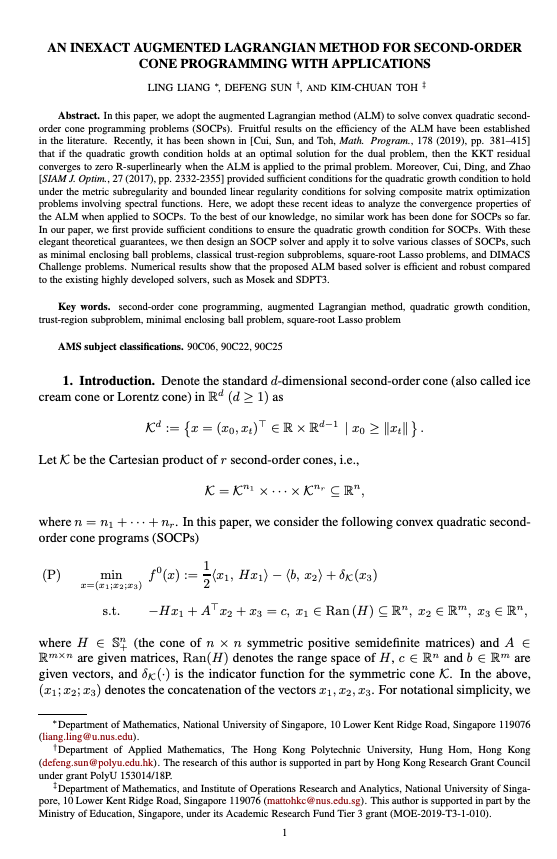In this paper, we adopt the augmented Lagrangian method (ALM) to solve convex quadratic second-order cone programming problems (SOCPs). Fruitful results on the efficiency of the ALM have been established in the literature. Recently, it has been shown in [Cui, Sun, and Toh, {\em Math. Program.}, 178 (2019), pp. 381–415] that if the quadratic growth condition holds at an optimal solution for the dual problem, then the KKT residual converges to zero R-superlinearly when the ALM is applied to the primal problem. Moreover, Cui, Ding, and Zhao [{\em SIAM J. Optim.}, 27 (2017), pp. 2332-2355] provided sufficient conditions for the quadratic growth condition to hold under the metric subregularity and bounded linear regularity conditions for solving composite matrix optimization problems involving spectral functions. Here, we adopt these recent ideas to analyze the convergence properties of the ALM when applied to SOCPs. To the best of our knowledge, no similar work has been done for SOCPs so far. In our paper, we first provide sufficient conditions to ensure the quadratic growth condition for SOCPs. With these elegant theoretical guarantees, we then design an SOCP solver and apply it to solve various classes of SOCPs, such as minimal enclosing ball problems, classical trust-region subproblems, square-root Lasso problems, and DIMACS Challenge problems. Numerical results show that the proposed ALM based solver is efficient and robust compared to the existing highly developed solvers, such as Mosek and SDPT3.

